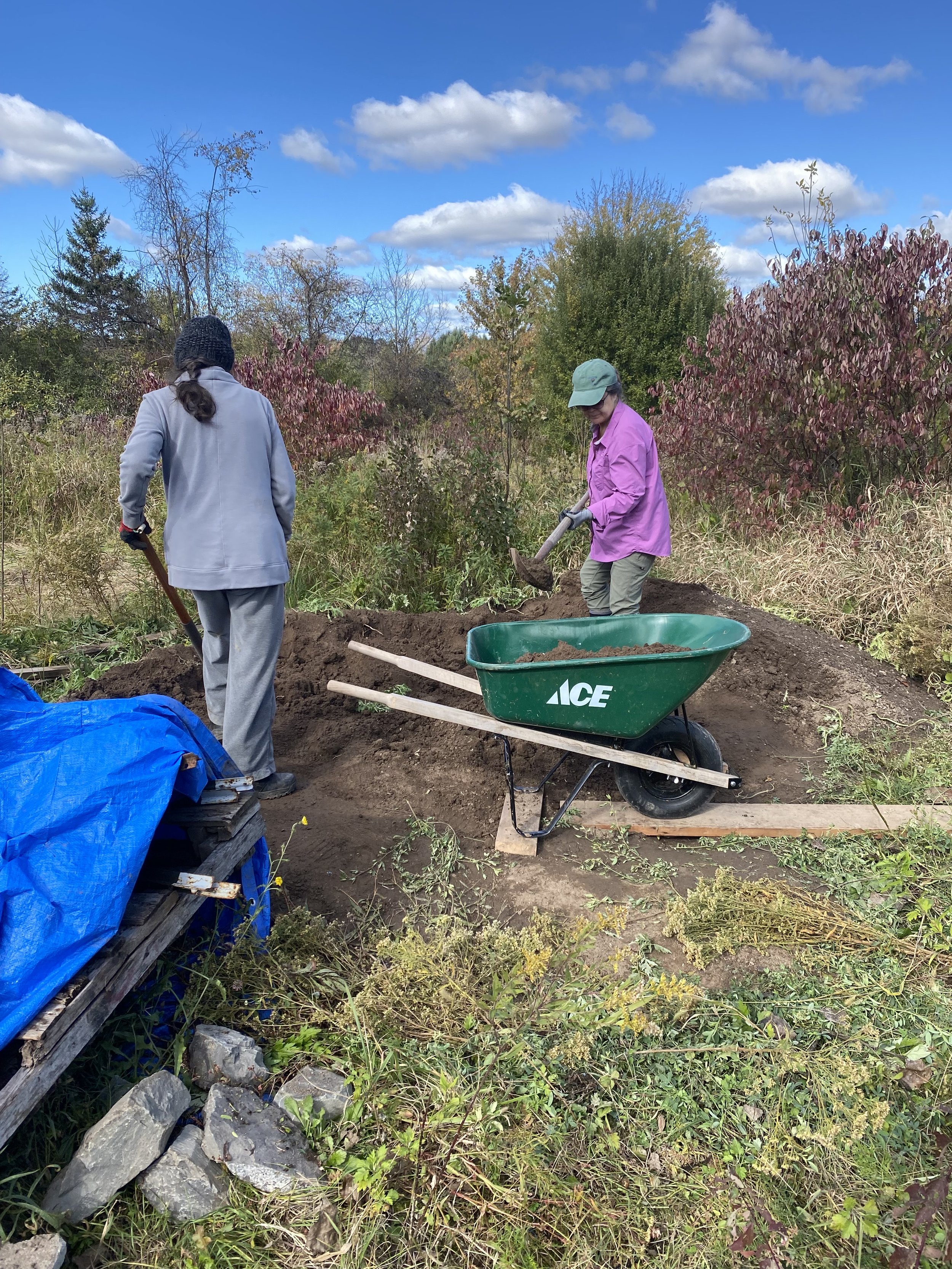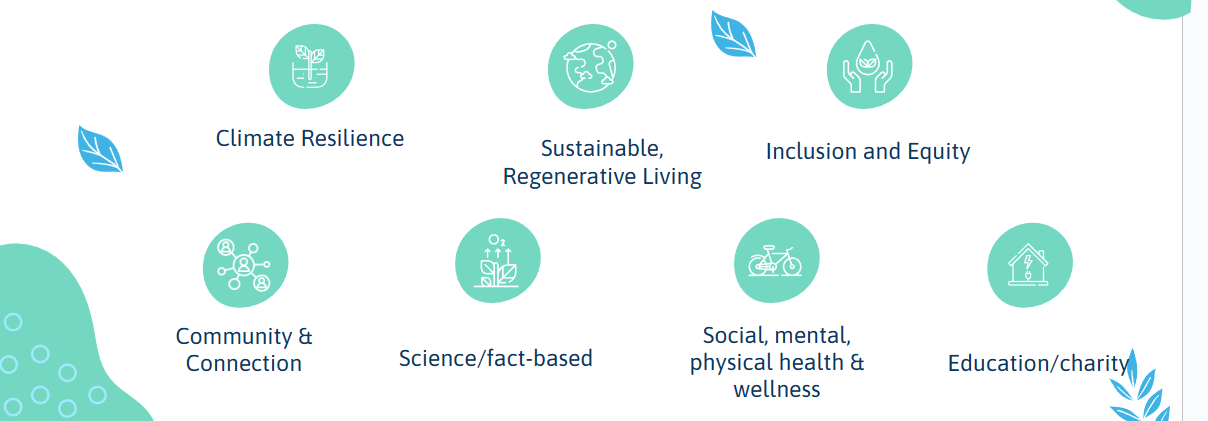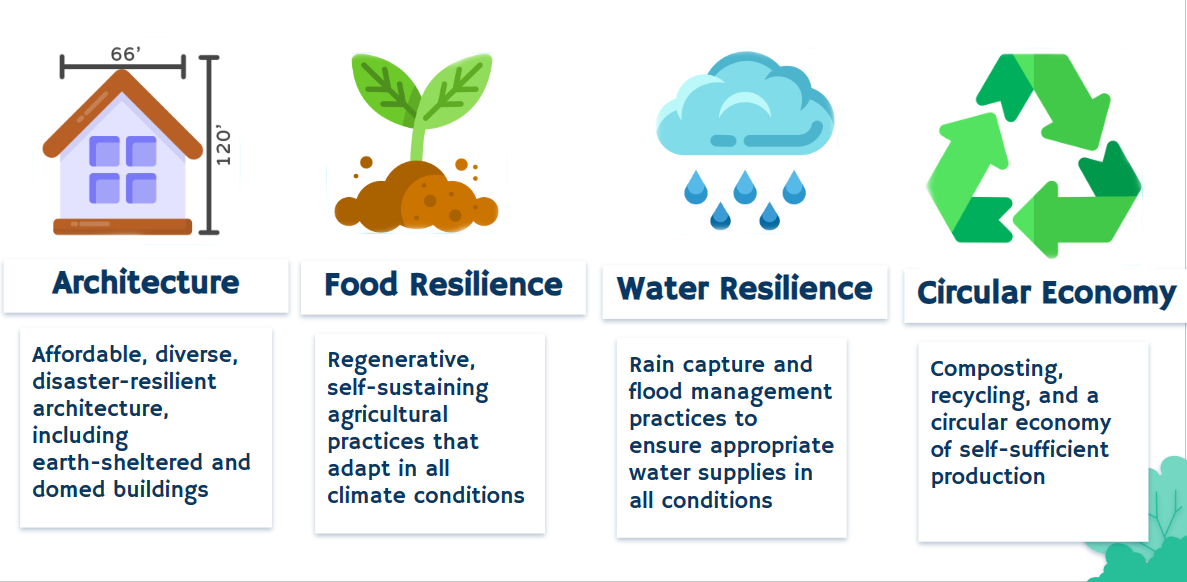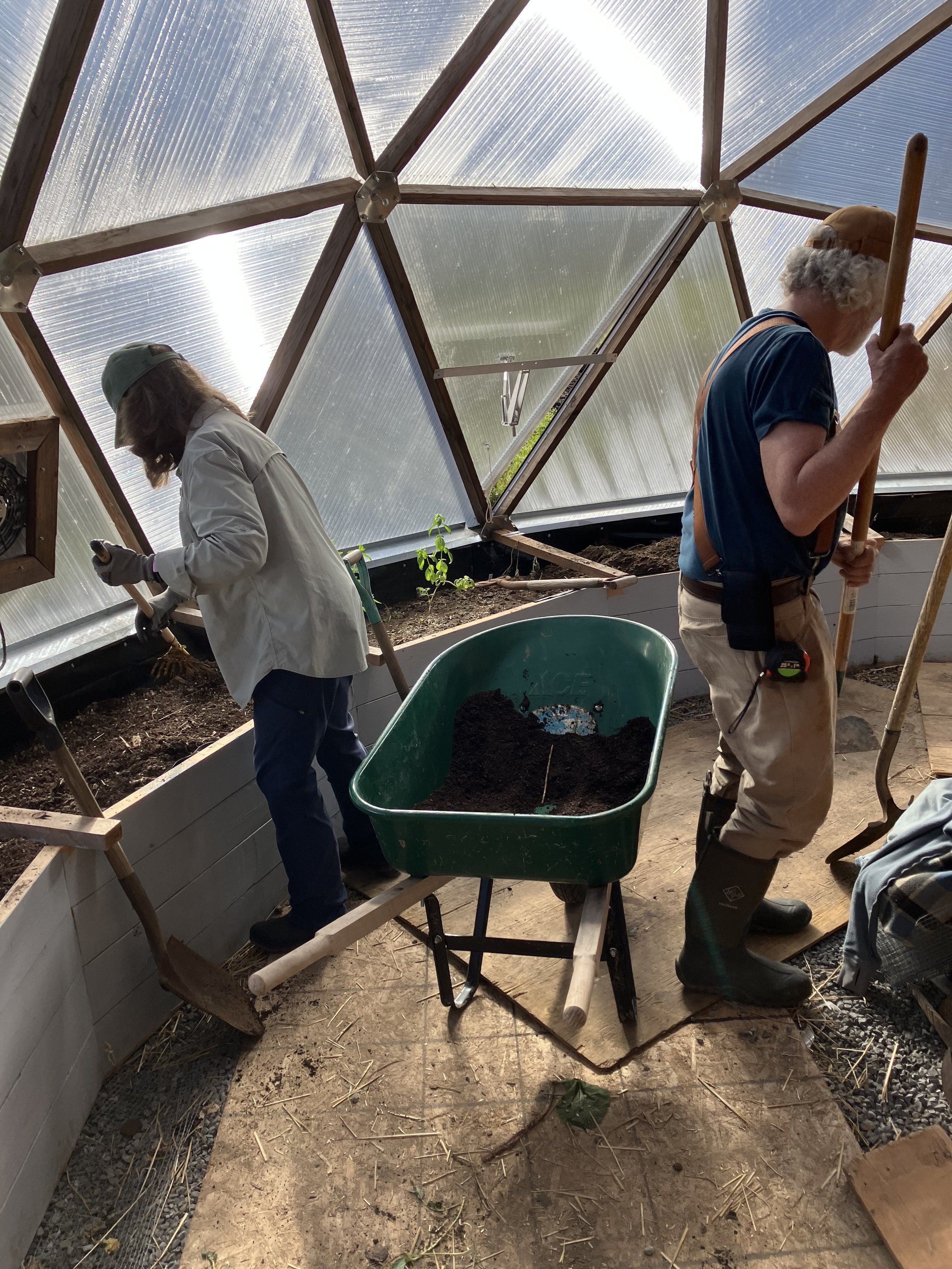
Mission - CSV New York
To form a model of a resilient and sustainable community, founded in our commitment to respond and adapt to the urgent challenges of the climate crisis and its economic impact. The model will be used to provide education to individuals, families, and entire communities about the necessary resources, essential skills, and innovative technologies that promote self-sufficiency and sustainable practices for humans, animals and plants. CSV Minnesota will have an emphasis on food, seed, and resource sharing networks.
Livability
Our village model prioritizes livability through three foundational pillars. First, it nurtures a positive community culture that encourages collaboration and mutual support, helping to reduce social isolation. Secondly, it integrates sustainable living practices, aiming to create a net-positive impact on the environment and improve overall quality of life. Lastly, the model incorporates workshare and educational programs, which are key to advancing our goals of inclusivity and community service, thereby giving the village a broader societal role.
Core Values
Unsustainable status-quo ways of living are isolating, and harmful to both people and the planet. To address these major challenges today, the solution is community. By building lives and resilience together, we can increase health and wellness for each other and the planet.
Our framework is built upon a set of foundational values and principles that guide our approach to building resilience in the face of climate change.
-
We focus on strategies and solutions that strengthen the ability of individuals and communities to adapt to climate-related disruptions.
-
Our practices aim to support living systems that are both sustainable and regenerative, creating a positive impact on the environment.
-
We are committed to fostering an inclusive environment where equity is paramount, ensuring fair access to resources and opportunities.
-
The strength of community bonds forms the cornerstone of our efforts, emphasizing the importance of connectivity and mutual support.
-
Our actions are grounded in scientific evidence and factual information, driving informed decision-making in all our initiatives.
-
Recognizing the interconnectedness of social, mental, and physical well-being, we integrate health and wellness into our resilience-building activities.
-
We dedicate ourselves to the dissemination of knowledge and charitable acts that empower individuals and communities towards self-sufficiency and resilience.
Climate Resilience
Our approach to sustainability encompasses four key dimensions: Architecture, Food Resilience, Water Resilience, and Circular Economy. We focus on developing affordable, diverse, and disaster-resilient architectural solutions including earth-sheltered and domed buildings. Our food resilience strategy is built around regenerative agriculture, ensuring self-sustaining practices that are adaptable to varying climate conditions. Water resilience is addressed through rainwater capture and flood management practices, safeguarding water supplies under all conditions. Lastly, our commitment to a circular economy is exemplified by robust composting, recycling, and self-sufficient production systems that minimize waste and maximize resource efficiency.
The climate change crisis is rapidly escalating, with devastating consequences for our planet and its inhabitants. Extreme weather events, loss of biodiversity, degrading ocean conditions, and rising sea levels are just a few examples of the challenges we face.
Community Model
Shared co-housing structures
Equal contribution of work, either through direct work, workshare partnership, or payment of fees
Every resident is a voting member of the HOA
Rotating membership committees
Features
Access to community structure, which includes:
Shared kitchen
Shared dining room
Recreational space
Meeting space
Library
Workshop
Storage
Self-sufficiency: food, energy, and water needs all can be met onsite, with sustainable and eco-friendly living
Greenhouse, raised beds, and fields
Chicken coops
Workshop for clothing, soap, etc
Small scale wind energy and solar panels
Resilient architecture to climate conditions, including earth-sheltered homes
How to Become a Member
To become a member of CSV Bellingham, first join CSV as an interested member at this link. When you sign up, be sure to indicate your interest in Bellingham, or any other relevant geographic location. After being added to our Basecamp community, you will have the opportunity to participate in discussion, volunteer, and fill out a CSV Bellingham Application form.






